Connected Number and Algebra, Level 2
Amazing AlgorithmsConnected Level 2, 2018: Step by Step | 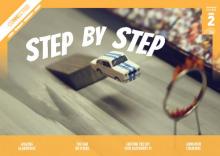 | |
| Context | Algorithms | |
| Mathematics | Algebra: Using step by step instructions to solve number problems. | |
| Cross Curriculum | Technology | |
Busy BeesConnected Level 2, 2012: The Buzz of Bees, p.9 | 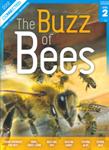 | |
| Context | Honey bees | |
| Mathematics | Number: Students calculate honey-producing rates of, and distances travelled by, honey bees. | |
| Cross Curriculum | Science: Living World | |
Living with a VolcanoConnected 1, 2011: Rūaumoko Rages, p.28 | 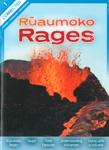 | |
| Context | Volcanoes | |
| Mathematics | Number: The number of passengers grounded at Heathrow Airport, as a result of a volcanic eruption in Iceland, is calculated from data. | |
| Cross Curriculum | Science: Physical World | |
Finding FridayConnected 1, 2007, p.26 | 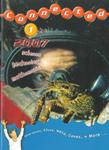 | |
| Context | A classroom is kept tidy by sorting and counting classroom materials. | |
| Mathematics | Number: Stage 5 number strategies are applied to practical classroom tasks. | |
| Cross Curriculum | Key competencies | |
Multiplication MondayConnected 1, 2004, p.2 | 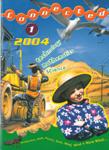 | |
| Context | Students look for number patterns about them in the school grounds and the classroom. | |
| Mathematics | Number: A connection is developed between skip counting and multiplication. | |
| Cross Curriculum | N/A | |
A Bird’s breakfastConnected 1, 2004, p.8 |  | |
| Context | Fictional birds are catching worms and sharing worm segments fairly. | |
| Mathematics | Number: Division problems posed and these are supported by precise drawings that show the numbers in each problem. Connections are made between fractions, division and multiplication. | |
| Cross Curriculum | Science: Living World | |
The Monster Birthday PartyConnected 1, 2003, p.2 |  | |
| Context | A monster mother is providing party food for young monsters and ensuring it is fairly shared. | |
| Mathematics | Number: Simple division problems are posed within the context of sharing different kinds of party food. | |
| Cross Curriculum | N/A | |
Out of StepConnected 1, 2002, p.26 | 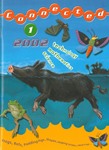 | |
| Context | This is a fictional story about three animals that escape from a zoo and are being pursued. | |
| Mathematics | Algebra: Problems posed in the story require the reader to continue different sequential patterns and explore relationships between them. | |
| Cross Curriculum | English | |
Baby MathsConnected 1, 2001, p.12 | 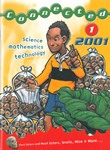 | |
| Context | A short poem tells about a baby’s body. | |
| Mathematics | Number/Geometry: The numbers in the poem highlight the body’s symmetry. | |
| Cross Curriculum | English | |
SnailsConnected 1, 2001, p.14 |  | |
| Context | A boy earns money by removing unwanted snails from his father’s garden. | |
| Mathematics | Number: Place value is explored through collections of ten snails, each of which is worth ten cents. | |
| Cross Curriculum | Science: Living World | |
The Case of the 13-year-old GrandmotherConnected 1, 2000, p.28 | 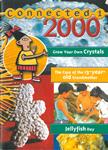 | |
| Context | A teacher has a leap year birthday. | |
| Mathematics | Number/Measurement: The multiplicative relationship between the number of leap years and the number of actual years is represented and explored with a double number line. | |
| Cross Curriculum | Social Sciences | |
Numbers, Numbers EverywhereConnected 1, 2000, p.30 |  | |
| Context | Numbers are found in many real life situations. | |
| Mathematics | Number: Readers are encouraged to recognize where we find numbers in our daily lives and how they help us. | |
| Cross Curriculum | Social Sciences | |
Eggs in the NestConnected 1, 1999, p.8 | 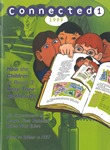 | |
| Context | A game for two players | |
| Mathematics | Number: Single digit subtraction strategies are investigated. | |
| Cross Curriculum | N/A | |
My Amazing PlantConnected 1, 1999, p.9 |  | |
| Context | A plant is growing quickly in a glasshouse. | |
| Mathematics | Number: Doubling and halving are investigated. | |
| Cross Curriculum | Science: Living World | |
Racehorse RhymeConnected 1, 1999, p.29 |  | |
| Context | A rhyme, a riddle and a joke. | |
| Mathematics | Number: This is a play on single digit number words. | |
| Cross Curriculum | English | |
PatternsConnected 1, 1999, p.30 |  | |
| Context | Photographs of patterns made with physical objects. | |
| Mathematics | Algebra: Pattern attributes of size, shape and colour are identified and recorded on a chart. | |
| Cross Curriculum | N/A | |
A Number Grid GameConnected 1, 1998, p.26 | 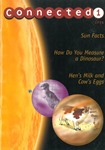 | |
| Context | A Number Grid Game | |
| Mathematics | Number: This game involves the consecutive addition of 21 single digit numbers. | |
| Cross Curriculum | N/A | |
Connected Geometry and Measurement, Level 2
SquawkzillaConnected Level 2, 2020: Digging Deeper | 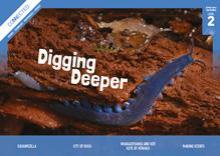 | |
| Context | Fossils | |
| Mathematics | Measurement: Sizes of bones from different birds are compared. | |
| Cross Curriculum | Science: Living World | |
Designer HomesConnected Level 2, 2014 | 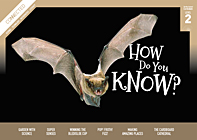 | |
| Context | Designing a children’s playground. | |
| Mathematics | Geometry: Students make a 3D model of an original playground design that is informed by survey data. | |
| Cross Curriculum | Social Sciences and The Arts | |
Designer HomesConnected Level 2, 2012: The Buzz of Bees, p.28 |  | |
| Context | Honey bees | |
| Mathematics | Geometry: The features of regular 2D shapes are explored, squares are counted to calculate their area, and the tessellations of hexagons and circles are compared. | |
| Cross Curriculum | Science: Living World | |
Bumble BeesConnected Level 2, 2012: The Buzz of Bees, p.8 |  | |
| Context | Bees | |
| Mathematics | Measurement: The body measurements of bumble bees and honey bees are compared. | |
| Cross Curriculum | Science: Living World | |
Investigating insulationConnected 1, 2010: Staying Warm and Keeping Cool, p.23 | 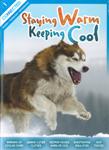 | |
| Context | A science experiment is undertaken to find the best material to trap heat. | |
| Mathematics | Measurement: Students read and record temperatures at regular intervals. | |
| Cross Curriculum | Science: Physical/Material World | |
Heat ThievesConnected 1, 2010: Staying Warm and Keeping Cool, p.23 |  | |
| Context | Exploring conditions that effect our body temperature. | |
| Mathematics | Measurement: Students read a wind-chill table, relating wind speed and air temperature. | |
| Cross Curriculum | Science: Physical/Material World | |
Monsters of the DeepConnected 1, 2009, p.2 | 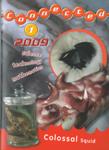 | |
| Context | Squid | |
| Mathematics | Measurement: The body measurements of different kinds of squid are presented for discussion. | |
| Cross Curriculum | Science: Living World | |
Te Papa’s Colossal SquidConnected 1, 2009, p.10 |  | |
| Context | The capture, preservation and examination of a colossal squid. | |
| Mathematics | Measurement: A range of measurements (length, capacity, temperature, weight) of a colossal squid is presented for discussion. | |
| Cross Curriculum | Science: Living World | |
Bird LandConnected 1 and 2, 2008, p.8 | 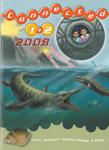 | |
| Context | Fossils reveal the nature of some NZ creatures from the past. | |
| Mathematics | Measurement: A limited number of time and measurement data are given and these can form the basis of discussion. | |
| Cross Curriculum | Science: Living World | |
Nailing it downConnected 1, 2006, p.20 |  | |
| Context | A father and son are building a wooden paling fence. | |
| Mathematics | Measurement: A fence length is measured using metres and centimetres, and skip counting and multiplication are applied to solve a problem. | |
| Cross Curriculum | Technology | |
Centre StageConnected 1, 2005, p.20 | 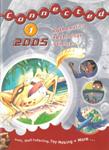 | |
| Context | A school idol competition is being performed on a circular rotating stage. | |
| Mathematics | Geometry: The full rotation of a circular disk is completed by 60 small turns. Quarter, half and three-quarter turns are explored with reference to this measure. | |
| Cross Curriculum | The Arts | |
Finding the Shapes in BuildingsConnected 1, 2002, p.30 |  | |
| Context | Geometric shapes are identified in photographs of buildings from different cultures. | |
| Mathematics | Geometry: Two-dimensional and three-dimensional shapes are defined. | |
| Cross Curriculum | The Arts and Technology | |
Baby MathsConnected 1, 2001, p.12 |  | |
| Context | A short poem tells about a baby’s body. | |
| Mathematics | Number/Geometry: The numbers in the poem highlight the body’s symmetry. | |
| Cross Curriculum | English | |
The Giant Who Needed a BedConnected 1, 2000, p.22 |  | |
| Context | The fictional story tells about a giant who accepts hospitality from the people of a village. | |
| Mathematics | Measurement: It is inferred that body measurements can be calculated from the length of a footprint. | |
| Cross Curriculum | English | |
The Case of the 13-year-old GrandmotherConnected 1, 2000, p.28 |  | |
| Context | A teacher has a leap year birthday. | |
| Mathematics | Number/Measurement: The multiplicative relationship between the number of leap years and the number of actual years is represented and explored with a double number line. | |
| Cross Curriculum | Social Sciences | |
Make a spinnerConnected 1, 1999, p.6 |  | |
| Context | Instructions are given to make a paper spinner. | |
| Mathematics | Measurement: A circle, its diameter and radius are informally investigated in this practical task. | |
| Cross Curriculum | Science: Physical World | |
What do you see?Connected 1, 1998, p.12 |  | |
| Context | Optical illusions | |
| Mathematics | Geometry: The length of lines on two trapeziums is compared. | |
| Cross Curriculum | The Arts | |
Clocks with a DifferenceConnected 1, 1998, p.14 |  | |
| Context | Time is shown in different ways on several unusual clocks. | |
| Mathematics | Measurement: Digital and analogue time is explored in an unusual way. | |
| Cross Curriculum | Technology | |
How Do You Measure a Dinosaur?Connected 1, 1998, p.20 |  | |
| Context | A practical investigation into the actual size of Tyrannosaurus rex. | |
| Mathematics | Measurement: A picture of a dinosaur is enlarged onto a grid using metre measures. | |
| Cross Curriculum | Science: Living World | |
Sun FactsConnected 1, 1998, p.6 |  | |
| Context | Sun facts | |
| Mathematics | Measurement: Mathematical facts about the sun are presented for discussion. | |
| Cross Curriculum | Science: Planet Earth and Beyond | |
Connected Statistics, Level 2
City of BugsConnected Level 2, 2020: Digging Deeper |  | |
| Context | Bugs | |
| Mathematics | Statistics: The number and type of invertebrates in different areas are counted. | |
| Cross Curriculum | Science: Living World Technology | |
Sea ScienceConnected Level 2, 2019: Wild Discoveries | 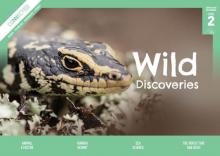 | |
| Context | Marine debris | |
| Mathematics | Statistics: Data on the types of marine debris found at different locations. | |
| Cross Curriculum | Science: Nature of science | |
The War on WeedsConnected Level 2, 2018: Step by Step |  | |
| Context | Marine pollution | |
| Mathematics | Statistics: Using a database of weeds. | |
| Cross Curriculum | Science: Living World Technology | |
Why do our muscles get tired?Connected Level 2, 2015 | 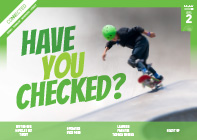 | |
| Context | Investigating muscle fatigue. | |
| Mathematics | Statistics: Designing an investigation, collecting and analyzing (finger) fitness data. | |
| Cross Curriculum | Health and PE | |
Operation Duck PondConnected Level 2, 2015 |  | |
| Context | Breeding habitats for ducks. | |
| Mathematics | Statistics: Describes the process of collecting scientific data and introduces outliers. | |
| Cross Curriculum | Science | |
The Takeaway TableConnected Level 2, 2013: I Spy..., p.20 | 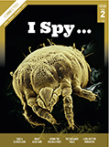 | |
| Context | Birds within a school environment. | |
| Mathematics | Statistical Investigations: Students undertake an investigation and collect data to inform them of the range of bird types in their school environment. This enables students to develop an appropriate bird table and feeding plan. | |
| Cross Curriculum | Science: Living World | |
Look out for MonarchsConnected Level 2, 2013: I Spy..., p.28 |  | |
| Context | Monarch Butterflies. | |
| Mathematics | Statistical Investigations: Students are encouraged to gather data about tagged and numbered monarch butterflies anywhere in NZ. By becoming ‘citizen scientists’, they are helping the Monarch Butterfly New Zealand Trust. | |
| Cross Curriculum | Science: Living World | |
What’s for lunch?Connected 1, 2006, p.26 |  | |
| Context | Discussion of the food pyramid begins an investigation into the nature of the lunches of the students in one classroom. | |
| Mathematics | Statistical Investigations: Food-type data are collected using tally charts, displayed in a bar graph, and discussed. | |
| Cross Curriculum | Health and PE | |
Bat MathsConnected 1, 2002, p.24 |  | |
| Context | Information is presented about the number of bat calls recorded in two locations: above a road and through a forest. | |
| Mathematics | Statistical Literacy: The reader is prompted to consider the conclusions drawn about bat call data that are presented in a table and on a bar graph. | |
| Cross Curriculum | Science: Living World | |
How the Children of Room 3 Keep Their Clothes On.Connected 1, 1999, p.25 |  | |
| Context | Button, zips, velcro, buckles, laces and elastic help to keep our clothes on. | |
| Mathematics | Statistical Investigations: Data are collected using a tally chart, and are presented on a bar graph. | |
| Cross Curriculum | Social Sciences | |
How Much Do They Eat?Connected 1, 1998, p.32 |  | |
| Context | A comparison is made of the amount eaten by a cow, a sheep, a dog, a cat and a hen. | |
| Mathematics | Statistical Literacy: The reader interprets a bar graph showing the kilogram amounts of food eaten by selected animals, and answers questions posed. | |
| Cross Curriculum | Science: Living World | |